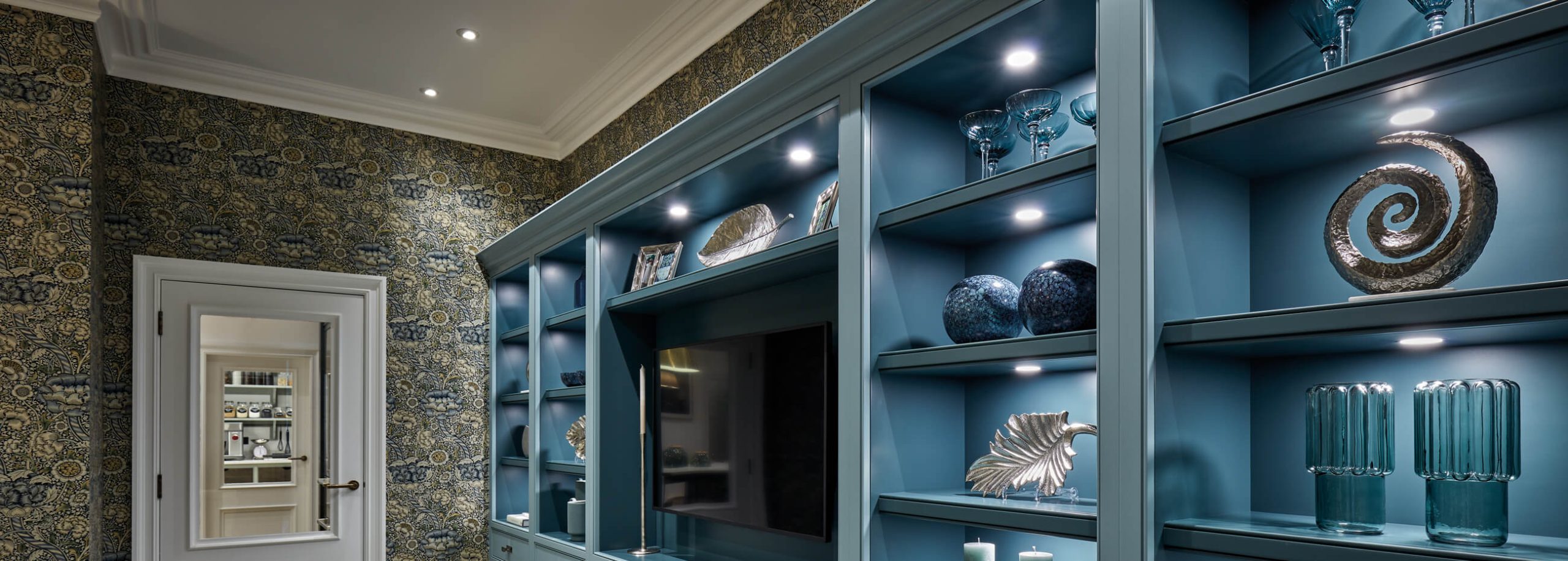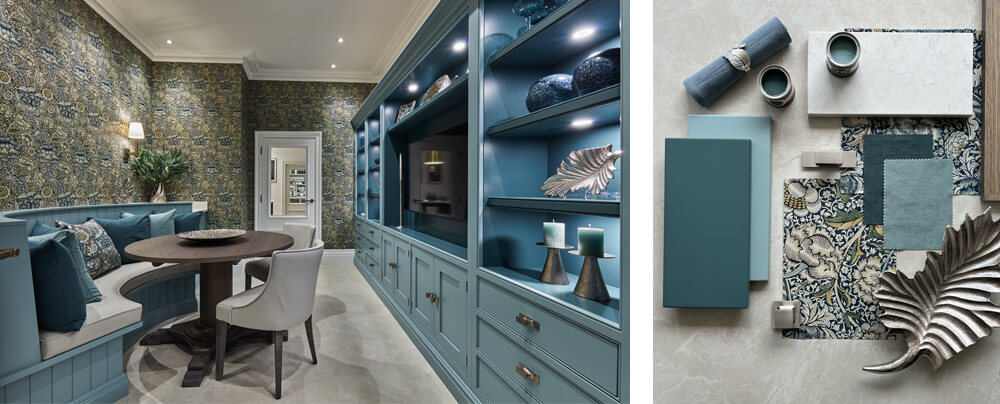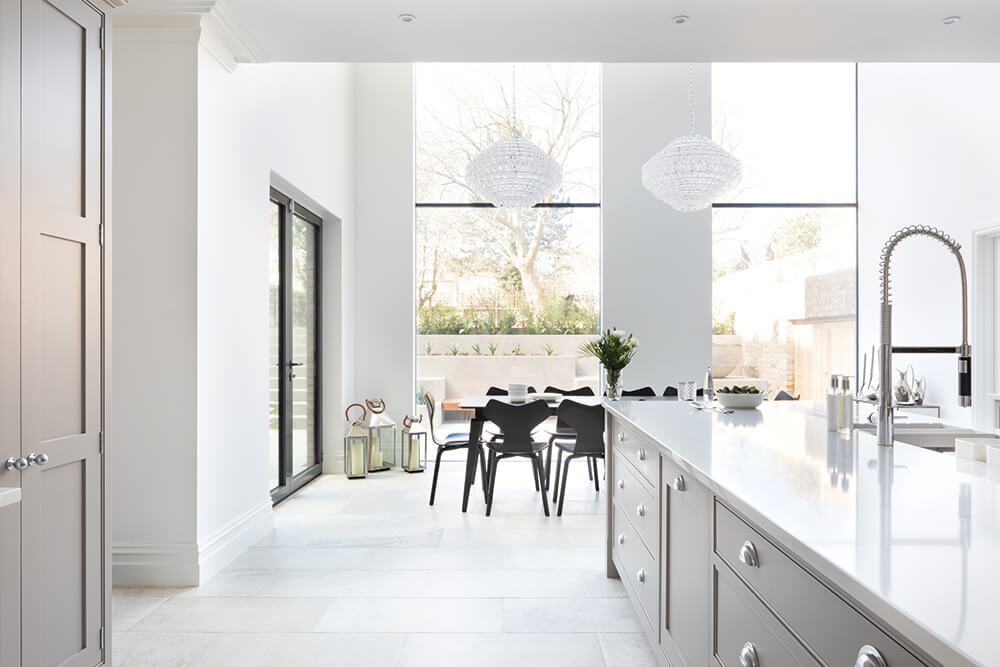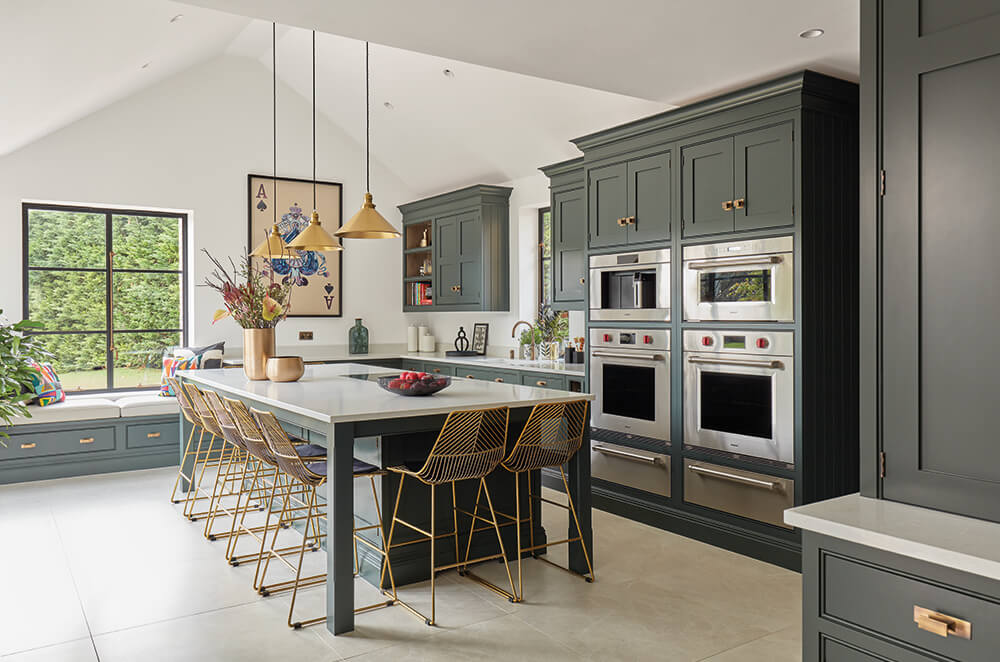

The kitchen, often referred to as the heart of the home, holds a significant role in defining the overall ambience and style of your living environment. Its design sets the tone for the entire residence, creating a seamless flow that unifies various spaces.
When you envision your dream kitchen, it’s not just the layout, cabinetry and appliances that should capture your attention. It’s the sum of all its parts – colours, textures, materials, and accessories – that contribute to its allure. Each element plays a role in shaping the aesthetic, which is where interior design comes into play. Engaging in collaboration with both an interior designer and a kitchen designer can yield immensely gratifying results. With their expertise, they can assist in curating a cohesive palette that extends beyond the kitchen, ensuring that the colours and materials resonate with your lifestyle and the overall design of your home.
Interior designers bring an artistic perspective to the table, helping you to select complementary hues, textures, and finishing touches that amplify the kitchen’s unique features and design. They can guide you in incorporating objects and decor that enhance the visual story you wish to convey. Whether it’s a vintage armchair to define a cosy nook, statement fabric for informal seating or well-placed lighting fixtures lending a touch of elegance, these design professionals possess the insight to weave these elements together harmoniously.
We had the privilege of sitting down with some renowned interior designers to gather their insights and expertise on bringing your kitchen design to life. Here’s what they had to say:
Q: How do you begin the interior design process with a client?
A: “I always begin the interior design process by getting to know as much as I can about my client and their family. I want to understand how they spend time in their home and with whom, plus what activities occur at home, including work, hobbies, exercise, homework, entertainment, etc. This is just as important as understanding their likes and dislikes in terms of colours, materials and interior style.”
Q: What should the client have ready before meeting with an interior designer?
A: “As well as thinking about their lifestyle so they can give an overview to the designer, it is beneficial when a client spends time thinking about their wish list for their home in advance, deciding what is non-negotiable in terms of the design of the home and which elements would be ‘nice to haves’. Taking some time to find images showing rooms you like (and even dislike) from interior magazines, Pinterest and Instagram is also really worthwhile as it is often easier to describe visually rather than with words.”
Q: What is your best piece of interior design advice?
A: “It is more important to have what you love in your home rather than what is in fashion. At the end of the day, it is how your home makes you feel and the memories you make within it that are significant.”

Q: What is your process when working with a kitchen designer?
A: “Ensure from the earliest moment possible that your interior designer and kitchen designer can collaborate and develop your scheme. The best results are when both parties have had the time and opportunity to tweak and improve the overall scheme – each will have their strengths and areas of expertise, so ensure this period of creativity is allowed for in the project timeline.”
Q: Do you have any tips on designing a space with longevity and timeless appeal?
A: “Choose finishes that are lasting and timeless as possible and suit the architecture of the building. That way, they will always be suited to the home they belong in, even if fashions come and go. Also, face the fact that the room will age and that your tastes and needs may change over the course of two decades, so make choices that allow for some level of flexibility.”
“Think about where you will be in 20 years, what your daily life will entail, how you will move about in the space, and who will be living there with you. Flexibility is key – a room may serve one function in 2020 and an entirely new function 20 years on, so long as the backdrop is well made, you should be onto a winner.”

Q: How would you stay true to the period style of your property when planning interiors?
A: “When it comes to a kitchen, you can remain true to the property’s original style, but this isn’t always essential. Sometimes interior designers can push boundaries and mix the old with the new to create one collaborative and cohesive space. For example, you can balance a contemporary kitchen with sleek appliances in a traditional heritage property, using more period style lighting, architectural features such as ceiling roses and cornice, beautiful upholstery and original flooring.”
Q: What is your best piece of interior design advice?
A: “My best piece of interior design advice is to be brave and challenge yourself. Don’t think just because you have seen one thing that this is the right way to go. There is normally an alternative option to think of that challenges the norm, or comes from a completely different perspective to what you originally expected.”

Q: What accessories or design features do you recommend to add interest to a kitchen?
A: “A well-considered light fixture over your kitchen island or table can make a real design statement. Not only will it create a beautiful focal point, but it will also elevate the entire space. We also love to introduce unexpected textures with barstools or other seating pieces. Whether it’s a warm leather or a subtle woven detail, these textures will add a touch of softness and interest to your space.”
Q: What is your best piece of interior advice?
A: “When it comes to designing a space, it is essential to consider both form and function. Striking the right balance between the two is key, and that is where working with an experienced designer can really make a difference. This is especially true for kitchens; they are often the heart of the home – a gathering space where so much more than just cooking and eating happens daily. That is why our goal is to create spaces that are just as functional as they are beautiful so that they can be enjoyed for many years to come.”
If you’re looking to start a new kitchen project, you can now bank handy tips and gather advice from experienced Tom Howley designers, leading property experts, architects and interior designers in our free kitchen renovation guide.
With special thanks to our expert contributors. For more information on the interior designers featured, follow the links below:
Gemma Hill – Bayswater Interiors
Naomi Astley Clarke
Sophie Franks – Sophie Franks Designs
Mandy Oestreich & Mark Lloyd – Marloe Interiors